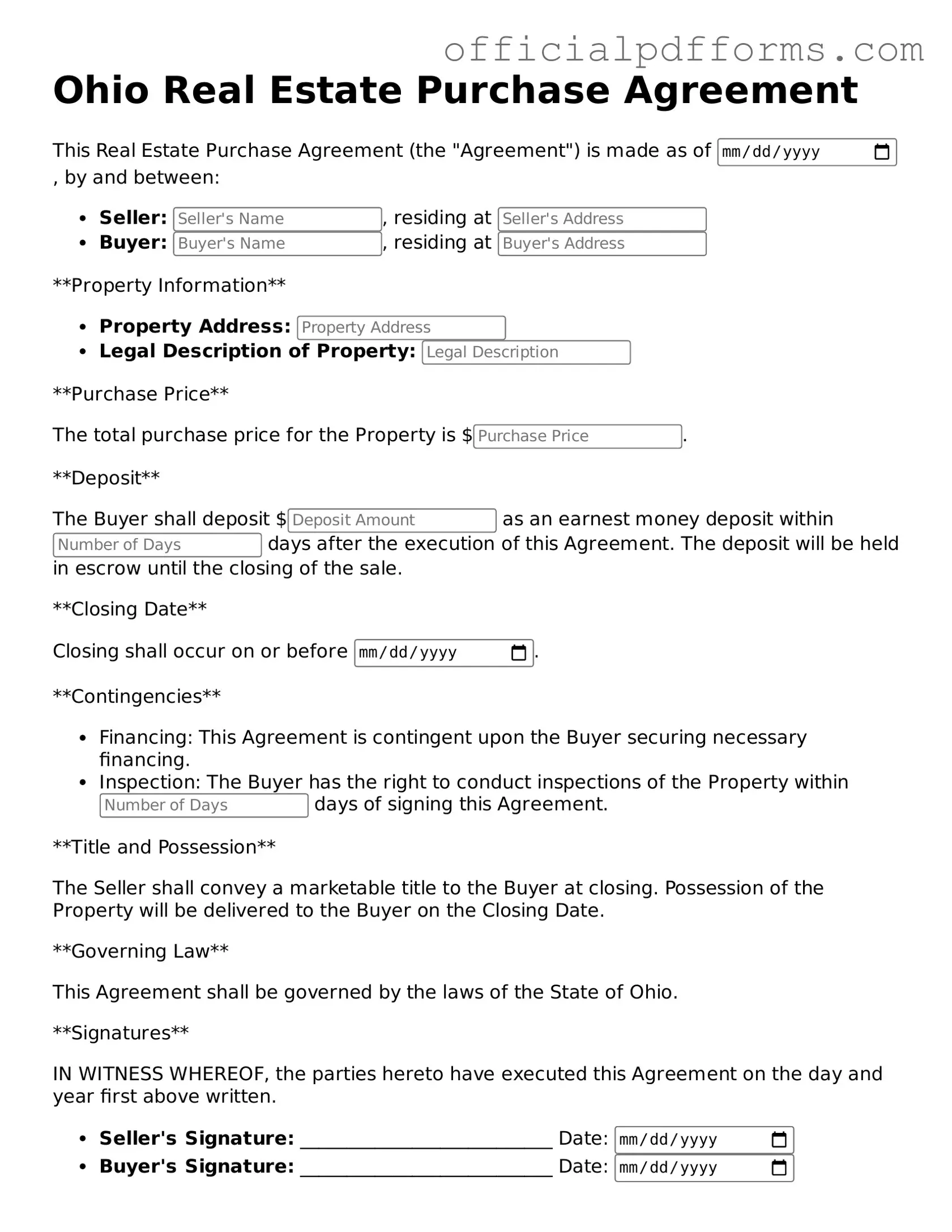Printable Ohio Real Estate Purchase Agreement Template
The Ohio Real Estate Purchase Agreement is a legal document used when buying or selling property in Ohio. This form outlines the terms of the sale, including the purchase price, closing date, and any contingencies. Understanding this agreement is essential for a smooth real estate transaction.
Ready to get started? Fill out the form by clicking the button below.
Access Form Online
